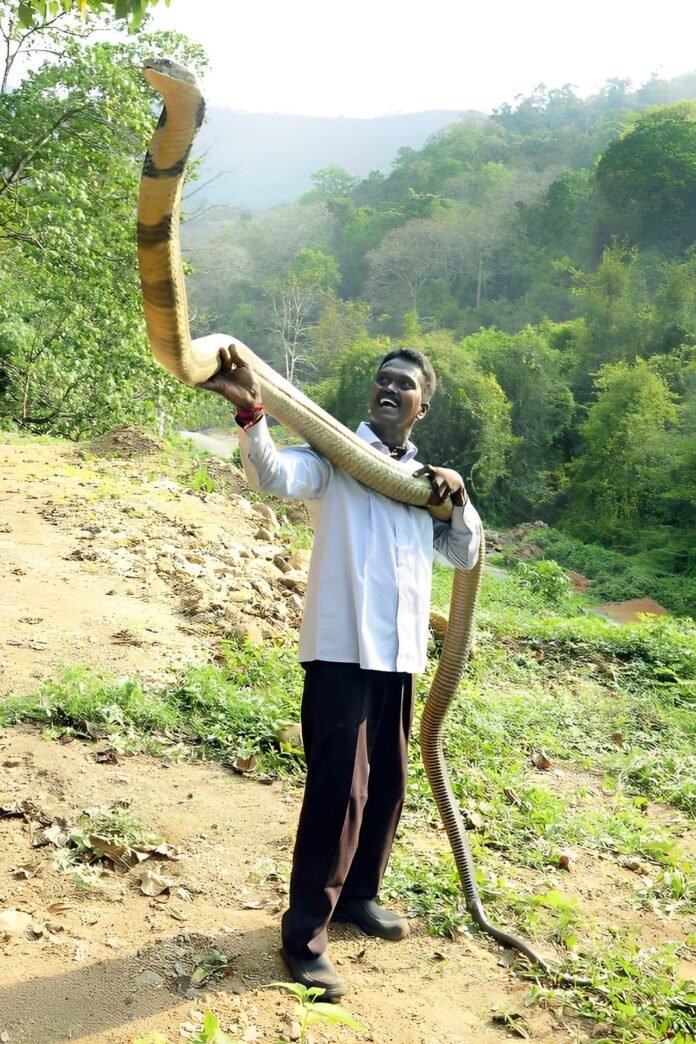A remarkable incident unfolded in the small village of Chandra, located in the Nagarbera Riverine Range of the West Kamrup Division in Assam. A 12-foot-long python, weighing approximately 20 kilograms, was rescued by local villagers, who displayed immense bravery and resourcefulness. The snake had been spotted in a distressed state, and while its size and venomous nature posed a significant risk, the villagers managed to safely handle the situation. However, the incident also sparked widespread criticism of the Forest Department for its delayed response and apparent apathy toward the safety and well-being of both the villagers and the snake.
The snake was found in a vulnerable position near a residential area, prompting immediate concern among the villagers. The villagers, who have a deep connection with the natural surroundings, quickly mobilized to protect both themselves and the reptile. They acted swiftly to contain the python, despite its intimidating size. After working together to safely restrain the snake, the villagers contacted the Forest Department for assistance, expecting a quick response given the potential danger posed by such a large and powerful creature.
However, the response from the authorities was far from prompt. Despite the villagers’ urgent call for help, the Forest Department took several hours to arrive at the scene. By the time the department’s personnel reached Chandra Village, the villagers had already managed to secure the snake, demonstrating considerable skill and knowledge in handling the situation. They decided to release the python back into the wild, away from populated areas, in a safe and suitable environment.
The delay in the Forest Department’s response has caused considerable frustration among local residents and wildlife enthusiasts. Many have expressed disappointment at the lack of urgency shown by the department, especially considering the growing concerns about human-animal conflict in the region. This incident has raised questions about the preparedness and effectiveness of the Forest Department, particularly in rural areas where residents often encounter wildlife but have limited support.
Local leaders have criticized the department for failing to prioritize the safety of both the community and the animals. Many pointed out that in such cases, prompt intervention by trained professionals is essential to avoid harm to both parties. The delay in the department’s response has amplified concerns about the Forest Department’s overall effectiveness in managing wildlife in the region. As human settlements continue to expand into areas traditionally inhabited by wildlife, these types of encounters are becoming more frequent, and the ability of the authorities to handle such situations in a timely manner has never been more critical.
This incident has sparked a broader conversation about the relationship between human settlements and wildlife in Assam. The region is home to several protected areas and rich biodiversity, but it also faces increasing challenges related to habitat loss, human-wildlife conflict, and the need for more effective wildlife conservation strategies. The villagers’ actions in this particular case underscore the importance of community involvement in conservation efforts, as they have shown that local knowledge and swift action can help mitigate the risks posed by wildlife encounters.
In response to the incident, the Forest Department has promised to review its protocols for dealing with wildlife rescues in rural areas. The authorities have acknowledged the need for improved response times and better coordination between local communities and forest officials. They have also assured the public that more training and resources will be provided to ensure that future wildlife rescues are handled more efficiently and safely.
While the villagers’ successful rescue of the python is a testament to their courage and resourcefulness, it also serves as a reminder of the importance of effective wildlife management and timely intervention by authorities. As human settlements continue to encroach on wildlife habitats, it is crucial that the Forest Department and local communities work together to protect both humans and animals, ensuring the safety of all involved. The incident in Chandra Village highlights the urgent need for improved wildlife management practices and more proactive support for communities living in close proximity to wildlife.




